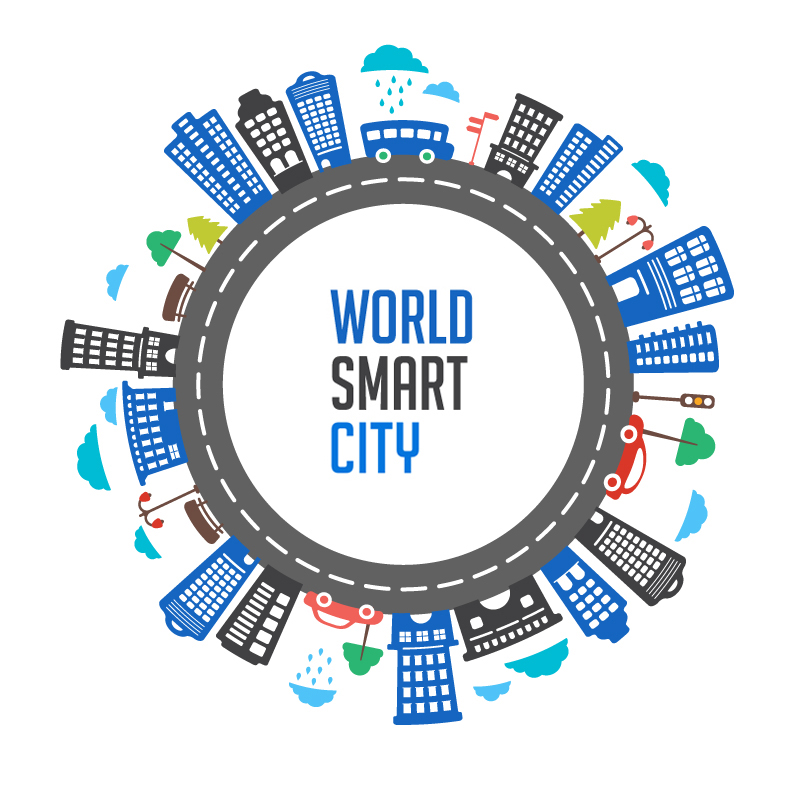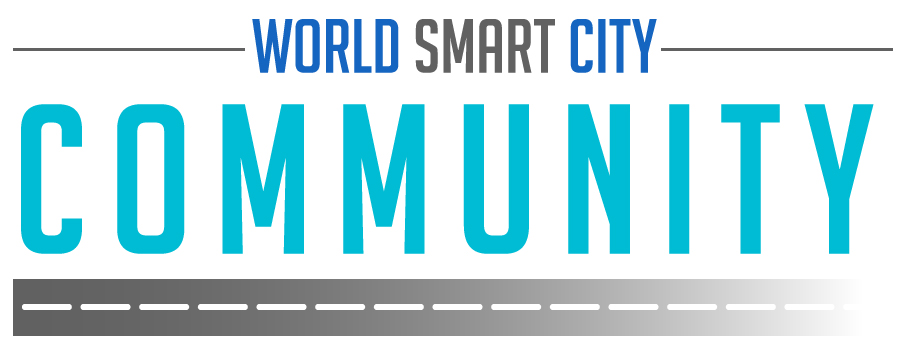According to Gillian Tett, the author of “The Silo Effect”, “We live in a world that’s hyper-connected, but incredibly fragmented”. The Internet of Things is only going to accelerate these trends. The ubiquity of the Internet of According to The Gartner Group’s research, by 2020 about 50 billion smart objects will be connected to the internet. As it evolves, sensor technologies have opened up new possibilities for achieving dramatically better levels of efficiency for all of the varied types of urban-centric networks — energy systems, power systems, transport systems, building systems.
As it becomes more widely distributed throughout the city, IoT technologies are making it possible for everyone in the city – from private sector, public sector, non-profits and academia — to leverage the inherent values contained within the vast quantities of data and information.
At a minimum, a city that becomes smarter is a city that’s a more attractive place to live and work. But on the road to becoming a smarter city, there are some key questions that need to be asked: How does a smarter city compete with other cities? Certain cities around the world are offered as exemplars of smarter urban systems — but how did they get started on this road? What are the future plans to which such cities are already committed? What should it look like and who should pay for it? How to convince people living and working in cities to share their data, while ensuring that it’s secure? How to engage the city’s residents and taxpayers and bring them on this journey? One place to start is with success stories — the local and global examples of best practices.
There are some constituent elements that comprise the core of a smart-city system:
*People: Connecting people in more relevant, valuable ways
*Process: Delivering the right information to the right place, person or machine at the right time
*Data: Leveraging data into more useful information for decision making
*Things: Physical devices and objects connected to the internet and each other for intelligent decision making
There are five key components for a successful city digital implementation (by utilities, universities, hospitals, etc.):
-Converged Management Network
Networks within any urban organization may operate with a patchwork of disparate systems and processes—sometimes within the same group—that don’t communicate with one another. That can lead to delays in the transfer of critical information and an incomplete picture of the challenges that are preventing cities from realizing their full potential. By converging those systems into one, they gain the ability to share information with one another, providing a reliable, transparent, and scalable technology foundation to build upon.
-Resilience at scale
All of this convergence, in addition to the billions of devices that are producing and communicating data requires that the network be capable of scaling exponentially while remaining manageable and stable.
-Distributed intelligence
The sheer amount of data that needs to be analyzed, coupled with the rapid speed with which decisions need to be made, requires the compute capability to be closer to the source of the data, so data can quickly be filtered and analyzed, and then transformed into actionable intelligence. Placing compute closer to the edge is what some now call the “fog” layer, as distinct from the cloud.
-Application enablement
An open, standards-based platform is essential for enabling third parties to quickly create robust and useful applications that are capable of analyzing, using, and adapting to intelligence about the physical world.
-Security and privacy:
Of course, security is a must – in addition to existing network security solutions (firewall, IPS, secure access), robust security must be integrated throughout the IoT implementation, with a layered approach required to achieve a comprehensive solution with no single point of failure. It’s high time for leaders to think of security in a completely different way. Whereas with existing network security one can simply quarantine an unknown or suspicious device, in IoT networks that device may serve a critical function. For example, if the device is a life support system, or even a system that manages the operations for a manufacturing plant, the cost of quarantine would be too great. This shows the need to gain a deeper understanding of every device touching the network, and to identify (and control, ideally) what is tied to it.
The private sector is investing a huge amount of time and money, many billions of dollars every year, to develop the technologies that make a connected city possible. These investments have focused in multiple areas:
- Technologies that empower people to collaborate anywhere, across voice, video, messaging, and social applications to work more productively and deliver higher-quality services;
- Network infrastructure solutions that make it easy to connect people and things anywhere and everywhere;
- Data center and virtualization technologies that allows for the development, testing, and deploying innovative applications faster and with less risk;
- Industry-leading security enables any organization to take advantage of new connections with total visibility, control, and threat defense.
All of these capabilities are being integrated into complete, ready-to-deploy solutions that extend across local government and city operations holistically. They can (and must) be applied consistently across the areas you’re focusing on—be it in any of the plethora of city services such as public safety, law enforcement and the courts, or education.
Given where cities are and the obstacles city officials perceive, what can be done to accelerate the journey? Here are some critical steps:
- Find a visionary leader: The right champion can be the catalyst to overcome all the other hurdles in the complex evolution of a smart city. This step is, in fact, a critical step and should be one of the first to be addressed.
- Move beyond planning: The planning initiatives the cities surveyed have undertaken are significant first steps. However, they need to move plans out of planning departments and into action. The process includes cutting through city bureaucracy and gaining greater visibility and input from citizens, businesses, and smart city vendors.
- Begin pilots that prove the value of larger efforts: The planning efforts help in truly understanding how to think big initially with a holistic, citywide evaluation and engaging the stakeholders to get buy-in. But careful pilots with clear estimates of costs, benefits, and a simple ROI analysis for each project will build the path to success for wider-scale efforts.
- Understand the costs and benefits: The survey results indicate that cities understand the benefits of a smart city on a global level, but they do not understand how to translate these benefits into specific metrics that apply to their cities. Nor do they have the models or tools to do so. In addition, it is clear that cities need to get a firmer estimate of the costs involved in smart city projects. Their lack of comprehension is understandable, because the array of different technologies that go into a smart city is vast, with complexities that are beyond the technological knowledge of any city, large or small.
- Explore available funding options: Although government bonds and other similar options may be a common choice historically, many cities appear not to be aware of better financing options available for smart city endeavors. Many innovative and relatively new financing mechanisms are available today, yet cities don’t seem familiar them. With different options for procuring technology, for instance, cities can shift to a business model that defines these projects as operating expenditures versus capital expenses.
- Improve internal support: To alleviate the internal barriers and lack of cross-vertical governance, it’s important to create a cross-departmental team to help pool funding sources and align priorities in tackling strategic projects. For instance, during a smart city evolution, cities will have many opportunities to create an ecosystem to solve individual departmental problems collectively, and these opportunities can help create significant efficiencies on many levels.
- Explore technology options: Cloud- and software as a service (SaaS)-based smart city solutions that can create economic efficiencies for cities are available today. Here too, these types of solutions also create staffing efficiencies, because external experts can become extensions of internal IT departments for little additional investment. Wherever possible, incorporate Smart Regulations and Open Architectures to help mitigate interoperability concerns.
- Start mobilizing technology: The lack of applications designed for mobile communications—which are core to smart city solutions—will certainly be problematic for cities. Mobile usage is skyrocketing, and businesses, tourists, and visitors who are tech-savvy will soon expect a city’s mobile communications to meet their needs.
- Learn from peers: Cities around the world are already undertaking massive smart city initiatives, and they are willing to share their stories. Many companies and cities are already sharing their insights.
- Find the right partners: The right tools, resources, and expertise can help cities with each of the steps mentioned here. With the right partnership, officials can gain the support they need to evolve quickly and realize the smart city benefits that are available for them.
Cities are pushing forward quickly, but they need to speed their adoption of smart applications of advanced technology in ways that enable better outcomes for citizens
According to George Ferguson, the long-standing Mayor of Bristol, technology provides need to remember the first principle: “Don’t come to us with solutions, ask us what we want to do”
There are perspectives which need to be heard far and wide. For instance, there’s the perspective of Ed Vaizey MP and former Minister of State at DCMS and BIS, with responsibility for digital industries: “Making better cities is the next stage of digital transformation”.



